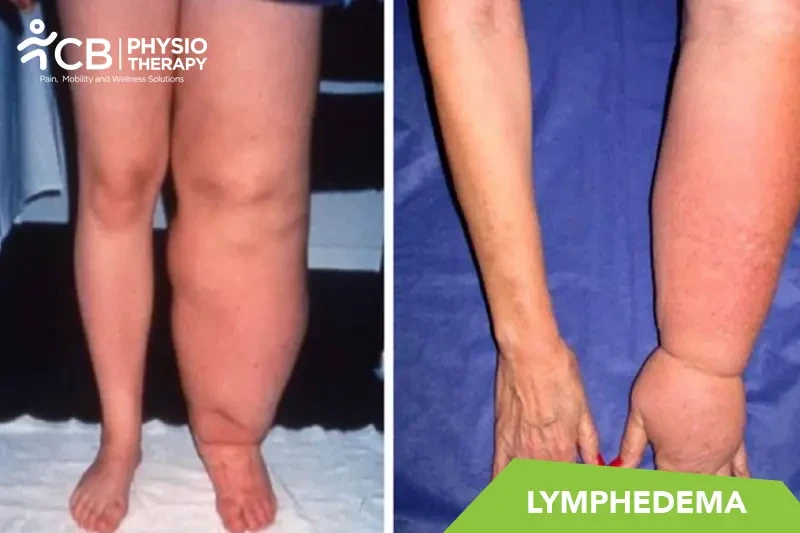Compression Therapy: Compression garments such as bandages, sleeves, or stockings are worn to provide external pressure, which helps reduce swelling and prevent the buildup of lymphatic fluid. These garments are often customized to fit the individual's needs and are worn during the day.
Skin Care: Proper skin care is essential for individuals with lymphedema to prevent infections and skin complications. Physiotherapists educate patients on techniques for cleansing, moisturizing, and protecting the skin, as well as strategies to minimize the risk of injury and infection.
Electrical Muscle Stimulation (EMS): EMS involves the use of electrical impulses to stimulate muscle contractions. In the context of lymphedema management, EMS may be used to promote lymphatic drainage by enhancing muscle pumping action and facilitating the movement of lymphatic fluid.
Transcutaneous Electrical Nerve Stimulation (TENS): TENS delivers low-voltage electrical stimulation through electrodes placed on the skin, targeting nerves to alleviate pain and discomfort associated with lymphedema. TENS may help reduce pain, improve circulation, and enhance tissue healing.
Interferential Current (IFC) Therapy: IFC therapy uses medium-frequency electrical currents to penetrate deeper tissues, providing pain relief, reducing inflammation, and promoting tissue healing. In lymphedema management, IFC therapy may help alleviate pain, improve lymphatic circulation, and reduce swelling.
High-Voltage Pulsed Galvanic Stimulation (HVPGS): HVPGS delivers pulsed electrical currents at high voltage to target deep tissues. This modality may be used to promote lymphatic drainage, reduce tissue fibrosis, and improve circulation in individuals with lymphedema.
Microcurrent Therapy: Microcurrent therapy delivers low-level electrical currents similar to the body's natural bioelectricity. It may be used to stimulate lymphatic function, reduce inflammation, and promote tissue repair in lymphedema management.
Russian Stimulation: Russian stimulation involves the application of medium-frequency electrical currents to stimulate muscle contractions. In lymphedema treatment, Russian stimulation may be used to enhance lymphatic drainage and improve muscle tone in the affected limb(s).
Shockwave Therapy: Shockwave therapy, also known as extracorporeal shockwave therapy (ESWT), is a non-invasive treatment that uses acoustic waves to stimulate tissue healing and reduce pain. While there is limited research on the use of shockwave therapy specifically for lymphedema, some studies suggest that it may have potential benefits for improving tissue regeneration and reducing fibrosis, which are associated with lymphedema progression. However, further research is needed to determine its effectiveness as a standalone treatment for lymphedema.
Therapeutic Ultrasound Therapy: Therapeutic ultrasound involves the use of high-frequency sound waves to penetrate deep into tissues, promoting tissue healing, reducing inflammation, and increasing blood flow. While therapeutic ultrasound may have potential benefits for managing certain aspects of lymphedema, such as tissue fibrosis and
inflammation, it is typically used as a complementary therapy alongside other primary treatments such as manual lymphatic drainage and compression therapy.
Pneumatic Compression Therapy: This therapy involves the use of pneumatic compression devices that intermittently inflate and deflate sleeves or boots worn around the affected limb. The sequential compression helps move lymphatic fluid and reduce swelling.
Manual Lymphatic Drainage (MLD): This is a gentle massage technique that encourages the flow of lymphatic fluid out of the affected limb or body part. It involves light, rhythmic strokes to stimulate the lymphatic vessels and move fluid towards healthy lymph nodes.
Myofascial Release: Myofascial release techniques focus on releasing tension and restrictions in the fascia, the connective tissue that surrounds muscles, blood vessels, and nerves. While myofascial release may help improve tissue mobility and reduce discomfort associated with lymphedema, it is usually used as a complementary therapy rather than a standalone treatment for managing lymphedema.
Lymphatic Drainage Exercises: These exercises involve specific movements and positions designed to promote lymphatic drainage. They may include deep breathing exercises, gentle stretching, and self-massage techniques.
Exercise: Controlled, low-impact exercise can help improve lymphatic circulation, muscle pumping action, and joint mobility. Physiotherapists can design personalized exercise programs tailored to the individual's abilities and limitations, focusing on activities such as walking, swimming, and resistance training.
Lifestyle Modifications: Physiotherapists may recommend lifestyle modifications to optimize lymphatic function and minimize the impact of lymphedema. This may include maintaining a healthy weight, avoiding tight clothing or jewelry that restricts lymphatic flow, practicing good posture, and avoiding activities that may exacerbate swelling.
